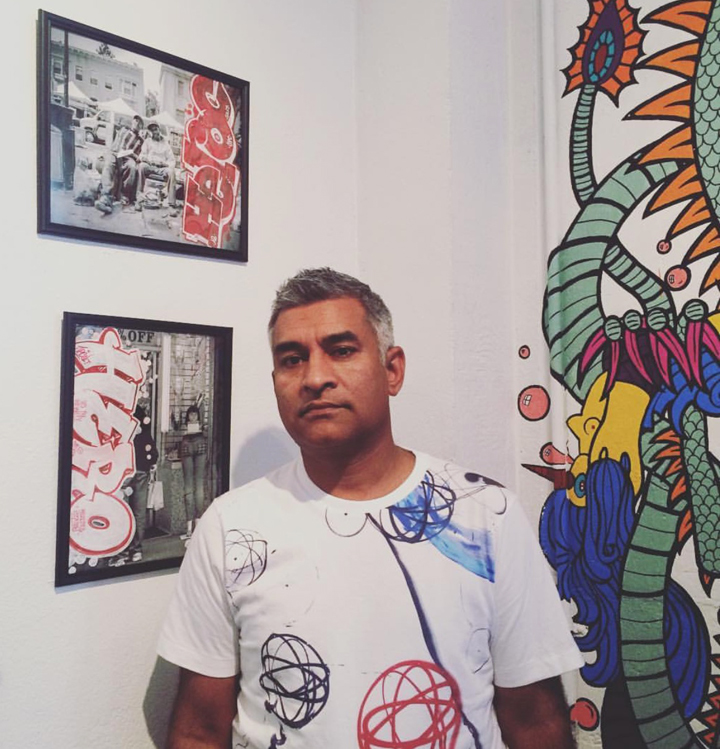
While visiting the Bay Area earlier this summer, I met up with photojournalist, Juxtapoz Magazine contributor and fellow graffiti/street art enthusiast Iqvinder Singh. I was delighted to have the opportunity to interview him:
What is your first street art/graffiti-related memory?
My earliest memory goes back to the late 70’s/early 80’s in Northern India. I grew up in Rajisthan and Punjab, where it was normal there for people to express their opinions and feelings on the walls. Print and broadcasted media were still considered a luxury for the rich, and the city walls reflected the voices of the unheard. I would see people painting the walls during the daytime without any fear of the police or shop owners. The messages were written in Hindi, English, Punjabi, Gujrati, Urdu and other local dialects. It was something expected and normal in my surroundings. It was odd to see blank walls with no messages. Smaller villages were less political, but they too decorated their walls, though with cultural and religious symbolism. Geometric patterns inspired by the muhgals, swastikas, flowers of life and Hindu dieties were very common. Some farmers even branded their cows with similar symbols. Colorful walls made the cities and villages livelier and more welcoming.
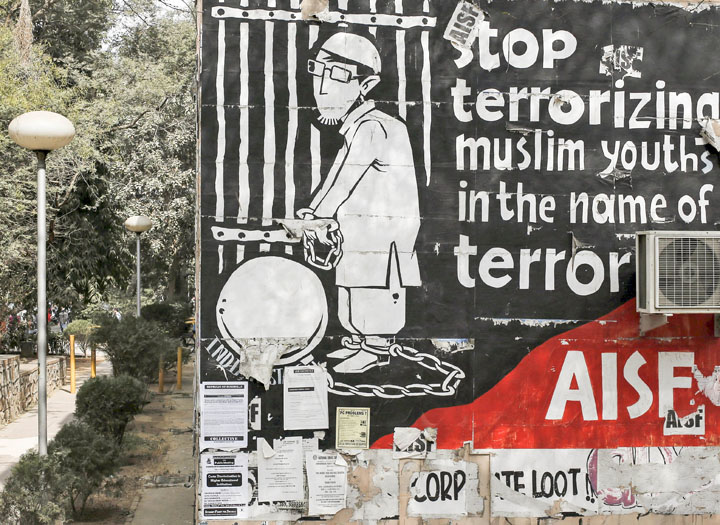
What was your initial impression of the streets here?
When my mom and I moved to Oakland in 1982, I was introduced to different types of markings and monikers in the San Francisco Bay Area. Suburbia meant clean walls, and any kind of wall markings were only found in the “bad areas” of the city. At an early age, I learned to appreciate the intricate hand styles of the local graffiti artists and witnessed what was to come in the 90’s and into the new century.

Did any particular artists stand out? Inspire you?
Among my earliest inspirations were East Bay graffiti artists: Plato, Fresh Kid, Echo and Rocs. In the early 90s, I met the late Mike Francisco a.k.a. Dream at the College of Alameda. He was one of my greatest inspirations, not only from a graffiti perspective, but also because of his views and stance on social/civil rights issues. He was very vocal about police brutality and other injustices that plagued our communities. Many of us aspired to reach Mike’s style status. I also admired Dizny from the TPC crew. Dizny was from Berkeley and painted beautiful murals touching on local and global topics. Where Dream had mastered the letter form, Dizny told stories with characters and broke down complex politics for an average kid from Oakland. San Francisco also blessed us with inspiring artists like: Twist, Margaret Kilgallen, Dug 1, KR, Revyon, Caryone and UB40.
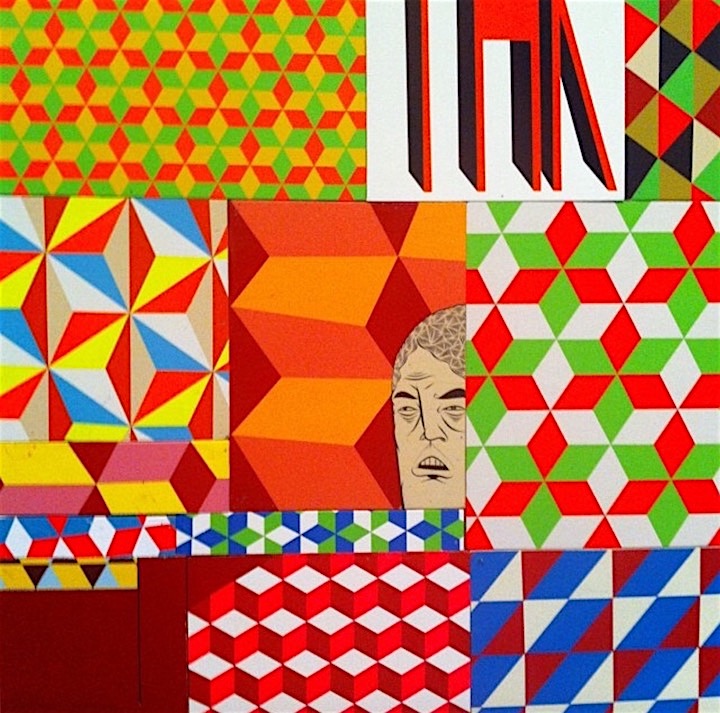
You’ve been documenting the Bay Area graffiti and street are scene for awhile now.
Yes! So many different styles came out of the San Francisco Bay Area, and I thought it was important to keep a record of it all. In 1997, I started a zine called Suitable 4 Framin’ which focused on underrepresented artists. I don’t think there were any other graffiti publications in Northern California at that time. I printed about 1000 copies of each issue and sold them at cost or traded them for other zines and magazines. I want to capture it all. The piece on the wall, the artist painting it, and whatever else is brewing the neighborhood. I try to post stuff that others may have missed or capture it from a different angle. I try to catch the artists in action, and I try to understand their influences and histories. Bay Area has churned out so many great artists, and those same artists influenced hundreds of others. From the 80’s to today, it’s been an amazing experience to live through so much good art. Graffiti is definitely here to stay, and I hope to tell the story from my perspective.
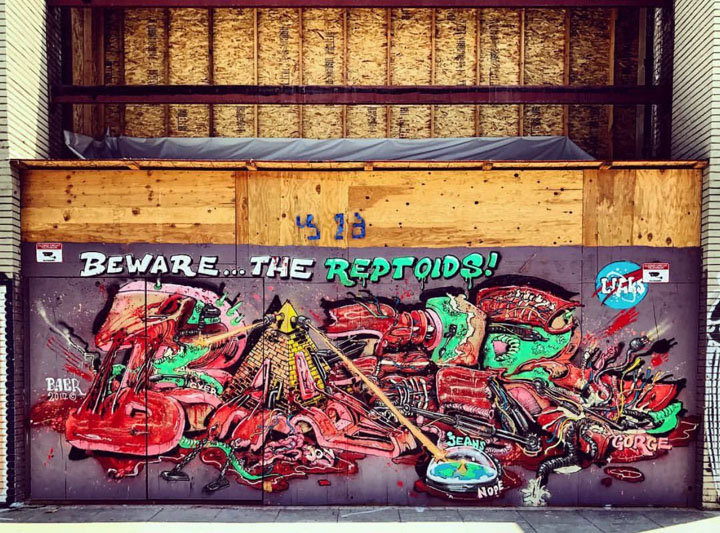
With easy access to social media, there are so many people documenting the graff/street art scene in the Bay Area these days. It’s always interesting to meet the photographers behind their Flickr or Instagram pages. They all started at different stages, and they all have a certain focus. Some are focused strictly on selected crews, hand styles, freights, throw-ups, burners, trucks… Some are good photographers but don’t know the artists or the history, and others are seasoned veterans.
You’ve photographed thousands of images. Do any particular pieces of graffiti and street art in the Bay Area stand out?
There are many. Whenever I see a piece by Lango, it’s always a treat. He is doing some next level painting with spraypaints. Stuff by Nychos and Aryz is always on a grand scale and their pieces always run for a while.
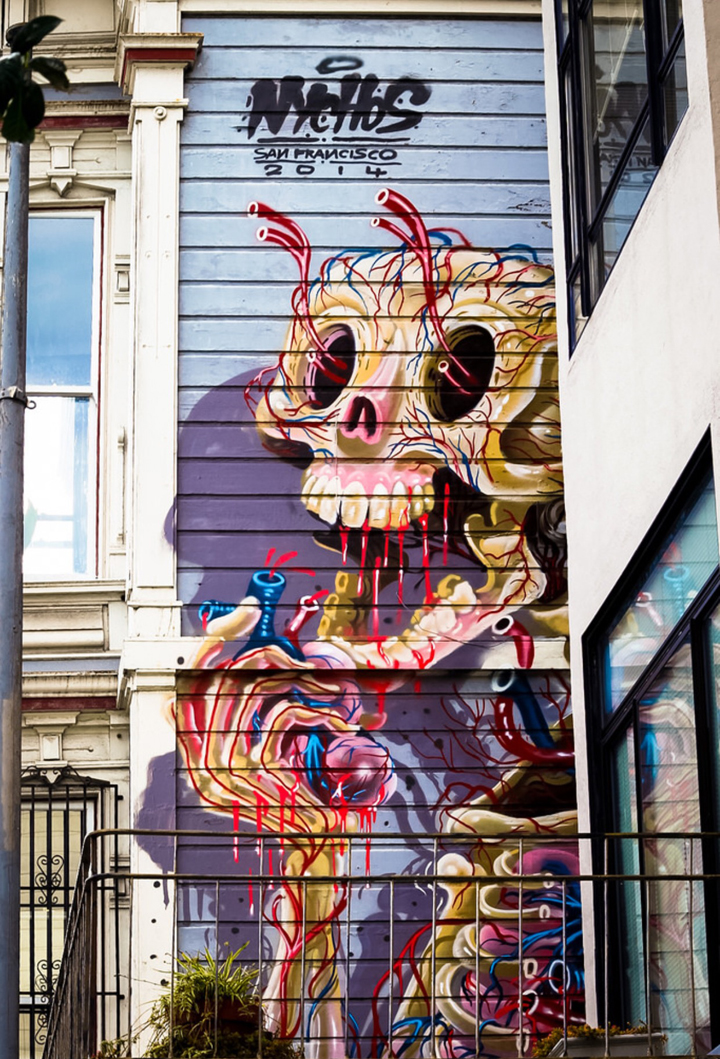
How has the Bay Area scene changed since you first became involved with it?
When I was active, your alias was very sacred. The goal was to be everywhere without anyone knowing who you were. Nowadays, graffiti/street artists hand you their business cards, links to their website, flyers and more. That mystery element is gone expect for the selected few. Graffiti/street art in general is a lot more acceptable. I remember when I did one of my first legal graffiti pieces in North Oakland in the late 80’s; it was a big thing at the time. Nowadays, most of the big productions are sponsored, and they are popping up everywhere, so people don’t get that excited. In the 80’s into 90’s, it was all about lettering, and there were many unique styles. Now, kids bring in characters, vegetables, clouds, animals, and other monikers as their tags. Work by guys like Ras Terms, Plantrees, and Broke speaks volume without any lettering. I personally prefer lettering, but I can still appreciate different trends. Paints are better, and there are even classes in graffiti. It’s, also, definitely more commercialized. And with the advent of Internet, artists have a lot more resources now. Artists use graff to sell merchandise or as a stepping stone for other business endeavors. Graffiti for the sake of graffiti is gone. There’s nothing wrong with earning money from something you love, but don’t exploit the art form.
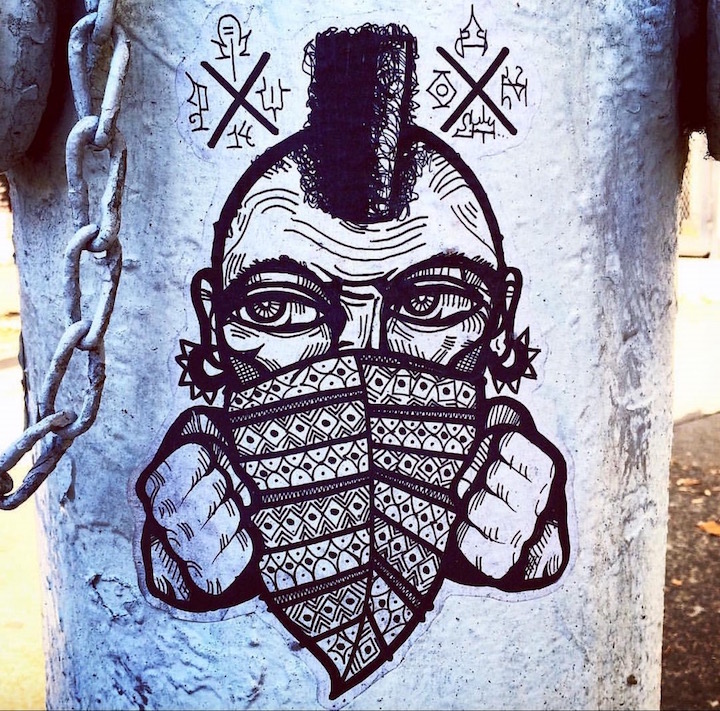
Besides your documentation of graffiti, you’ve also photographed life in many ethnic communities across the country.
Yes, for some of my previous corporate gigs, I had the opportunity to travel over the country. I started documenting immigrant communities in my travels. I photographed Indians, Japanese, Mexicans, Chinese, Hmongs, and many others. It was a cultural experience to discover their roots and learn about their struggles to achieve that American experience. And, yet, I was most intrigued by the Chinese.
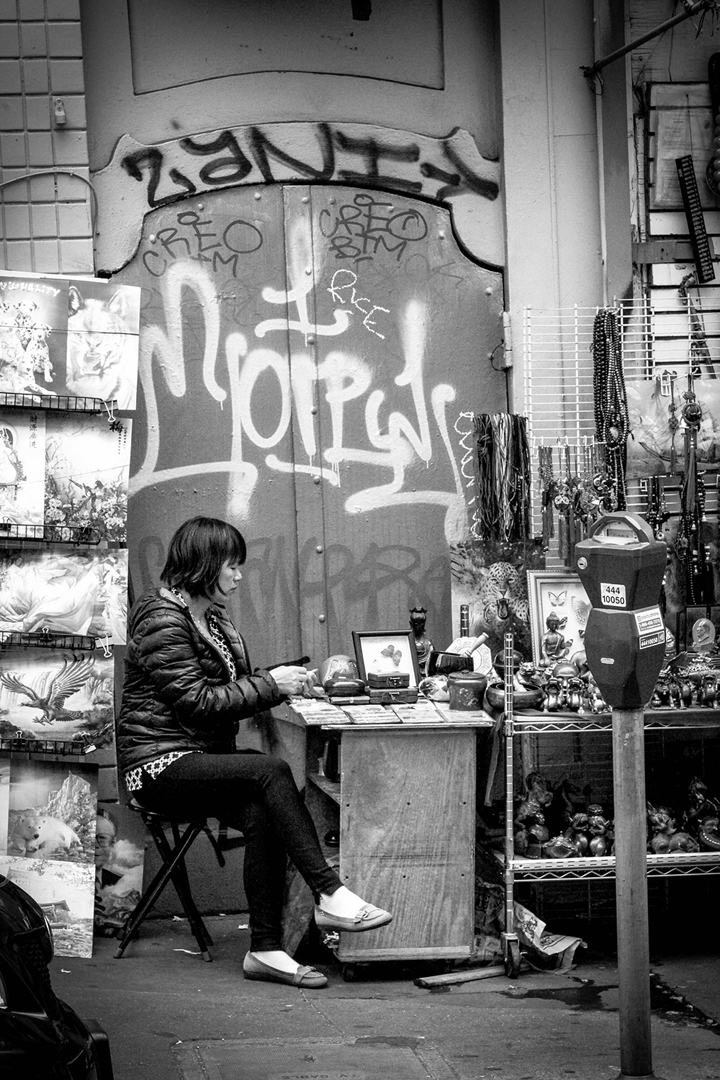
Your solo exhibit, Everything’s Fine in Chinatown, was recently on view at the historic Throckmorton Theatre Gallery in Mill Valley. Have you any impressions of the graffiti you’ve encountered in the Chinatowns that you’ve visited? And what spurs your intense interest in Chinatowns?
Graffiti was one of the main reasons I used to go to Chinatowns. Chinatowns had some of the best trucks. I think the businesses learned that there was no point in painting over this stuff, as it wasn’t hurting their business. I’m intrigued by how the Chinese, particularly the ones living and working in Chinatowns, hold on to their cultural identity like no other ethnic group. Regardless of what goes in the world, there never seems to be any politics in Chinatown. It’s always business as usual. There’s a blend of old, new and hints of the future in Chinatown. It’s a mashup of everything you want in one place: restaurants, art galleries, temples/churches, schools… My goal with these photographs is to not only capture life as it exists today but also to document the changes that are brewing in the background.
Images
1 Iqvinder Singh at the “Out of Order” art show, Bay Area
2 Political poster in India
4 Barry McGee aka Twist at Oakland Art Museum
5 Baer
6 Nychos
7 Ras Terms & Leaf Leaver
8 from Iqvinder Singh‘s solo exhibit “Everything’s Fine in Chinatown”
All photos courtesy Iqvinder Singh
Note: Hailed in a range of media from WideWalls to the Huffington Post to the New York Times, our Street Art NYC App is now available for Android devices here.

Warning: count(): Parameter must be an array or an object that implements Countable in /srv/users/serverpilot/apps/streetartnyc/public/wp-content/themes/thesis_189/lib/classes/comments.php on line 43
{ 0 comments… add one now }